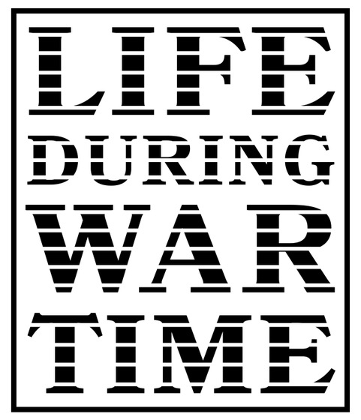
Atelier Van Lieshout
Atelier van Lieshout (AVL), the celebrated art, design, and architecture studio founded by Joep van Lieshout, combines idealism and grit to produce sculptures, installations, furnishings, architectural spaces, and plans for the future of humanity. Functional or fantastical, their work is shaped by a belief in self-sufficiency, distrust of politics and power, and the universal paradigms of life and death. They approach each project as a Gesamtkunstwerk—a total work of art formed from a synthesis of methods, materials, and disciplines.
In all of its projects, but especially in those presented in Life During Wartime, AVL proposes ideas and objects as systems for living: self-organizing projects maintained by flows of information, energy, and matter. While AVL envisions utopian outcomes for these systems, the studio freely allows that they can also lead to a world of disease, violence, and extremism. The choice, AVL suggests, is entirely ours.
— CVF, USFCAM
“Autocrat is a survival car for living in remote places—far away from civilized society without being deprived of its comforts. The mobile home contains a large kitchen and a sleeping area on the inside and another kitchen outside for heavier culinary work, such as the slaughtering of animals. The mobile home was designed and manufactured with the utmost autocracy in mind. The complete work, including the hardware, water taps, the locks, and the stove, was created from scratch and avoided all ready-made products. Autocrat plays a key role in Atelier Van Lieshout's evolution, as the vehicle was one of the first mobile homes constructed by the studio and the work gave rise to the slaughter project. For that project, pigs were slaughtered on a farm according to traditional methods. All the parts were immediately used or preserved by drying, salting, smoking, pickling, and other methods. From the carcasses of the pigs, new sculptures were made. That project, in turn, was the starting point for AVL Ville: a functioning and self-sufficient free state with its own flag, constitution, and currency that functioned for a full year in Rotterdam.”
— AVL
“Tampa Skull is a claustrophobic living unit. Its dimensions were determined by the absolute minimum amount of space that a human body needs in order to move from one section to another and use its facilities: a toilet, a bathroom, a kitchen with a deep frying pan, an office, a living room, and a bedroom. Compact yet complete.”
— AVL
“Very Bad.
Tabula Rasa.
Much More Time.
Back to Basics.
Necessary Reset.”
— AVL
“With Orgone Helmet, Atelier Van Lieshout draws on the theories of the early twentieth century psychoanalyst Wilhelm Reich, who developed a number of unorthodox theories on sexuality and energy. Reich developed the ‘orgone energy accumulator,’ a cabinet that could gather energy from the atmosphere. Patients were to sit inside these cabinets as a cure for all ills, from a cold to cancer or impotence. In line with Reich’s theories, Van Lieshout designed Orgone Helmet, channeling all potency to the user’s head.”
— AVL
“Inspired by theories similar to Reich’s, Sensory Deprivation Helmet makes use of the minimal space needed for the body to relax: a helmet in which the individual can withdraw and shut himself away from the world, to reach a completely self-contained mental state. It’s almost like autarky, but in your head.”
— AVL
Artist Joep van Lieshout. Photo by Ben Kleyn.
About Atelier Van Lieshout
Rotterdam, Netherlands
In 1995, Joep van Lieshout (Ravenstein, Netherlands, 1963) founded Atelier Van Lieshout and has been working solely under the studio’s name ever since. The studio moniker exists in Van Lieshout’s practice as a methodology toward undermining the myth of the artistic genius. Over the past three decades, Van Lieshout has established a multidisciplinary practice that produces works on the borders between art, design, and architecture. By investigating the thin line between manufacturing art and mass-producing functional objects, he seeks to find the boundaries between fantasy and function, fertility and destruction. His works share a number of recurring themes, motives, and obsessions: systems, power, economic independence, life, sex, and death. Van Lieshout’s works have been included in biennials in Gwangju (South Korea), Venice (Italy), Yokohama (Japan), Christchurch (New Zealand), Shanghai (China) and São Paulo (Brazil). Atelier Van Lieshout’s works are included in the permanent collections of the Museum Boijmans Van Beuningen (Rotterdam, Netherlands), the Stedelijk Museum (Amsterdam, Netherlands), the Prada Foundation (Milan, Italy), and the Ludwig Forum for International Art (Aachen, Germany).
Artist website: ateliervanlieshout.com
Artist Instagram: @atelier_van_lieshout
Artist Twitter: @atelierlieshout
Artist Facebook: @ateliervanlieshout.rotterdam
Gallery website: jousse-entreprise.com
Gallery website: carpentersworkshopgallery.com
Gallery website: giomarconi.com
Gallery website: galeriaomr.com

